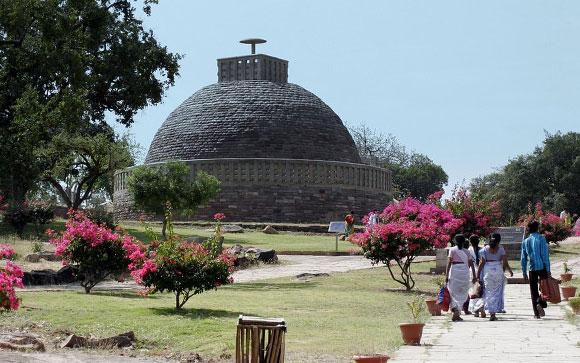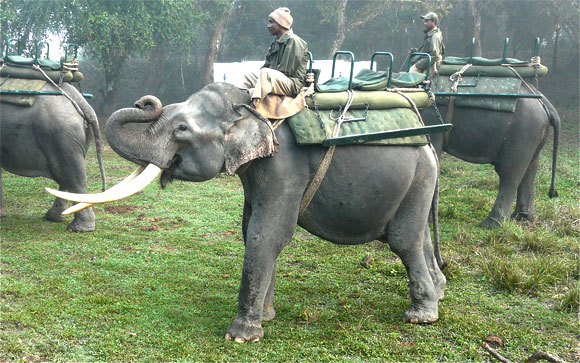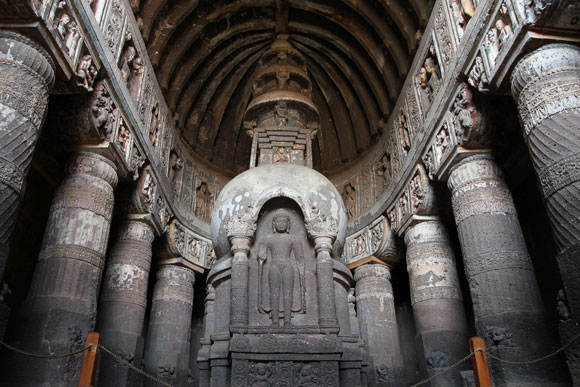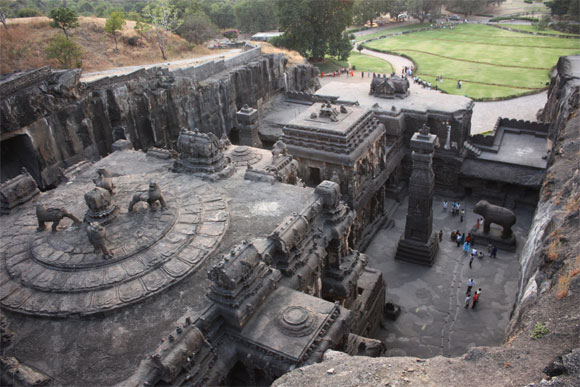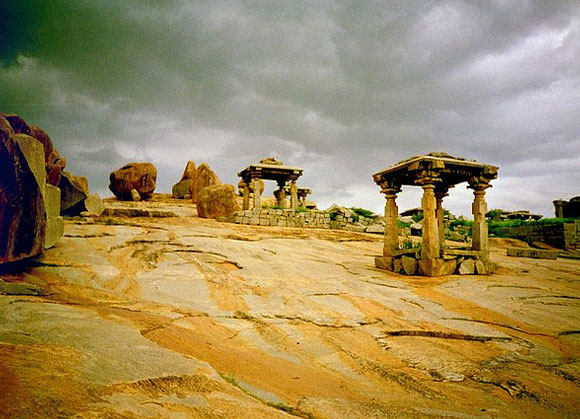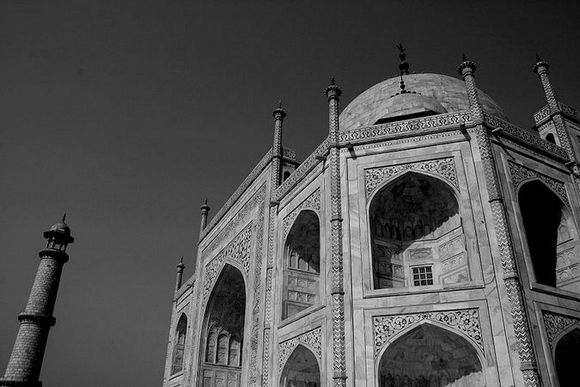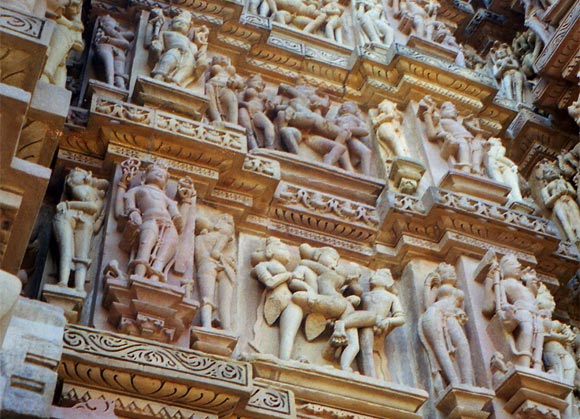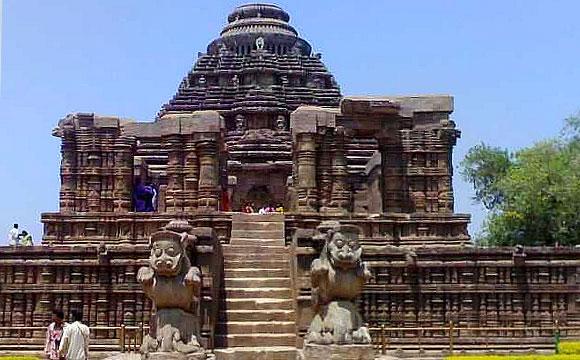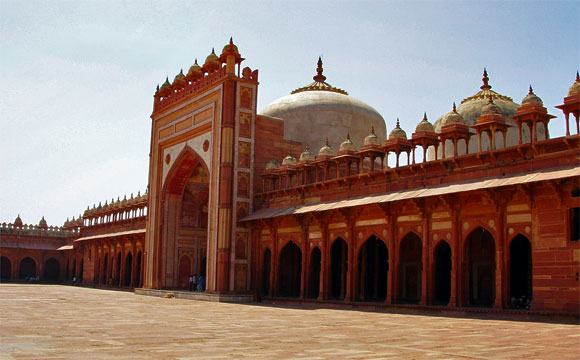 | « Back to article | Print this article |
PICS: Top 10 World Heritage sites in India
TripAdvisor reveals the top ten UNESCO World Heritage Sites in India most highly recommended by its traveller community. Have you been to any of these? Post your pictures here!
Of the many UNESCO World Heritage sites in India, travellers and TripAdvisor users have voted for the top ten sites that you absolutely must visit, if you havent already
10. Buddhist Monuments at Sanchi, Bhopal
The Stupa at Sanchi is one monument that you must dedicate a great amount of time to so you can appreciate how this place brings to life the vision of a realm where peace, well being, good deeds and thought guided a monarch to better things and a better life.
At the site stands a huge dome-shaped stupa that is built over the relics of Buddha, by the Emperor Ashoka. The construction of this holy site dates back to the 3rd and 12th century BC while the other stupas and gateways on its four sides are most probably constructed later.
The road to and from the historical site, as well as its rail access are kept neat and clean and the Govt of Madhya Pradesh and the accomodations around it are a treat after the trek around the Stupa site, says a TripAdvisor user. (Read this travel piece on Madhya Pradesh!)
Click here to upload your travel pictures on Rediff ZaraBol!
Post a description of your photo (where it was taken, when etc.) in less than 140 characters and we will publish your pictures right here on Rediff.com and in India Abroad.
PICS: Top 10 World Heritage sites in India
9. Kaziranga National Park, Assam
Home to the one-horned rhino that can be found nowhere else in the world the Kaziranga National Park is also a World Heritage Site that has the highest density of tigers among protected areas in the world.
The Park has been declared a Tiger reserve in 2006 and is also a breeding ground for elephants, swamp deer and wild water buffalo. Hire a cottage in the park to spend some time in the wild and take elephant rides in the park's lush green environs.
Click here to upload your travel pictures on Rediff ZaraBol!
Post a description of your photo (where it was taken, when etc.) in less than 140 characters and we will publish your pictures right here on Rediff.com and in India Abroad.
PICS: Top 10 World Heritage sites in India
8. Ajanta Caves, Aurangabad
Dating back to 2nd century BC, the Ajanta Caves are perhaps Maharashtra's best-known tourism attractions besides Ellora.
The Archaeological Survey of India describes the paintings and sculptures in these cases as 'the finest surviving examples of Indian art, particularly painting'.
According to various accounts the caves were cut in two phases. The first one started around 2nd century BC while the second dates to 400-650 AD.
The caves of Ajanta were all but lost since the area around them was heavily forested after they were abandoned. In 1819 however a British officer on a hunting party 'rediscovered' them.
Today, the caves are home to the largest collection of early Indian wall paintings as well as architectural carving rarely found in India.
It terms of style, they are closely related only to the nearby Ellora caves though a distant resemblance can be found in the 5th century paintings of Sigiriya in Sri Lanka. (Don't miss: Postcards from Sri Lanka)
Click here to upload your travel pictures on Rediff ZaraBol!
Post a description of your photo (where it was taken, when etc.) in less than 140 characters and we will publish your pictures right here on Rediff.com and in India Abroad.
PICS: Top 10 World Heritage sites in India
7. Ellora Caves, Aurangabad
Even though Ellora's name is taken in the same breath as Ajanta, giving one the impression that they are perhaps neighbours, this famous archaeological site is over 100 km away from Ajanta.
The 34 caves are fantastic examples of Buddhist, Jain and Hindu rock-cut temples constructed between the 5th century and 10th century and stand testimony to the religious harmony prevalent during this period.
Click here to upload your travel pictures on Rediff ZaraBol!
Post a description of your photo (where it was taken, when etc.) in less than 140 characters and we will publish your pictures right here on Rediff.com and in India Abroad.
PICS: Top 10 World Heritage sites in India
6. Hampi, Karnataka
The ruins of Hampi, the capital of the Vijayanagar empire are spread over an area of 26 sq km. By some accounts the city was said to be so rich that diamonds were sold on the street. The landscape of the city is arid and the city itself is surrounded by endless numbers of boulders. However within this is a small oasis that is nestled near the river that flows through it.
Visit Hampi around the first week of November when the city hosts the spectacular Hampi Utsav that will leave you spellbound. (Check out: The royal ruins of Hampi in pictures)
Click here to upload your travel pictures on Rediff ZaraBol!
Post a description of your photo (where it was taken, when etc.) in less than 140 characters and we will publish your pictures right here on Rediff.com and in India Abroad.
PICS: Top 10 World Heritage sites in India
5. Mahabodhi Temple, Bodh Gaya
Said to be the location where Buddha is said to have attained enlightenment, the Mahabodhi Temple in Bodh Gaya is the holiest destination for Buddhists from across the world.
The complex houses the famous temple as well as a descendant of the original Bodhi Tree under which the Buddha is said to have gained enlightenment besides monasteries from other nations that have a Buddhist tradition.
According to Buddhist mythology it is believed that when the world is destroyed, Bodh Gaya will be the last place to disappear from the face of this earth and the first to reappear.
Click here to upload your travel pictures on Rediff ZaraBol!
Post a description of your photo (where it was taken, when etc.) in less than 140 characters and we will publish your pictures right here on Rediff.com and in India Abroad.
PICS: Top 10 World Heritage sites in India
4. Taj Mahal, Agra
Inarguably India's most recognisable monument to the world, the Taj Mahal was built by Shah Jahan in the memory of his wife Mumtaz Mahal and has been a UNESCO World Heritage Site since 1983.
Regarded as the finest example of Mughal architecture, the Taj Mahal is essentially an integrated complex of structures that took 21 years and thousands of artisans and craftsmen to complete. The Taj Mahal also appears on the new listing of the New Seven Wonders of the World.
Click here to upload your travel pictures on Rediff ZaraBol!
Post a description of your photo (where it was taken, when etc.) in less than 140 characters and we will publish your pictures right here on Rediff.com and in India Abroad.
PICS: Top 10 World Heritage sites in India
3. Khajuraho, Madhya Pradesh
Best known for their erotic sculptures, the temples of Khajuraho are probably quoted against the Indian moral brigade more than they're visited. Go there though, if only to understand our heritage and the tantric ideology better that suggests sex to be an important part of human life and important to the attainment of moksha.
Click here to upload your travel pictures on Rediff ZaraBol!
Post a description of your photo (where it was taken, when etc.) in less than 140 characters and we will publish your pictures right here on Rediff.com and in India Abroad.
PICS: Top 10 World Heritage sites in India
2. Sun Temple, Konarak
The majestic Sun Temple of Konark is among the many shining examples of ancient Indian engineering. Even though it stands partly in ruins, the majestic temple is bound to overwhelm you.
Constructed along the seashore as a gigantic chariot of Surya, the Sun God, to commemorate a military victory by the Ganga dynasty King, Narasimhadeva, the Konark Sun Temple has an east west alignment and seven magnificent, spirited, life-size horses appear to be drawing the chariot towards dawn.
Rediff reader Sharda Crishna (read her account here) who visited the temple describes the temple: Twelve pairs of exquisite, ornate wheels of the chariot, each around ten feet in diameter, are the major attractions of the Temple. The spokes of the wheels serve as sundials, and the shadows formed by these give the precise time of the day. Together, the twelve pairs of wheels (representing 12 months of the year) and the seven horses (representing days of the week) drawing the chariot symbolise the passage of time.
Images of the mighty Sun are positioned in different directions at Konark capturing the sunrays at different times of the day. On the northern wall is the Sun God called as Astachala-Surya (setting-sun). This beautiful image is carved of high-quality green chlorite stone and is one of the masterpieces of Konark. Surya wears tall riding boots, and is accompanied by a small figure of Aruna, the charioteer, at his feet."
Click here to upload your travel pictures on Rediff ZaraBol!
Post a description of your photo (where it was taken, when etc.) in less than 140 characters and we will publish your pictures right here on Rediff.com and in India Abroad.
PICS: Top 10 World Heritage sites in India
1. Fatehpur Sikri, Uttar Pradesh
The grand Buland Darwaza opens into the sprawling 16th century city of Fatehpur Sikri that served as the capital of the Mughal Empire for ten years. Fatehpur Sikri is also where the legends of Akbar and his famed nine courtiers were born.
According to various historians, Emperor Akbar took personal interest in the construction of Fatehpur Sikri seeking perhaps to revive the grandeur of the Persian court that was made famous by his ancestor Timur.
Even to this day, Fatehpur Sikri has many well preserved palaces and courtyards that stand testimony to Akbar's love of architecture.
Click here to upload your travel pictures on Rediff ZaraBol!
Post a description of your photo (where it was taken, when etc.) in less than 140 characters and we will publish your pictures right here on Rediff.com and in India Abroad.
